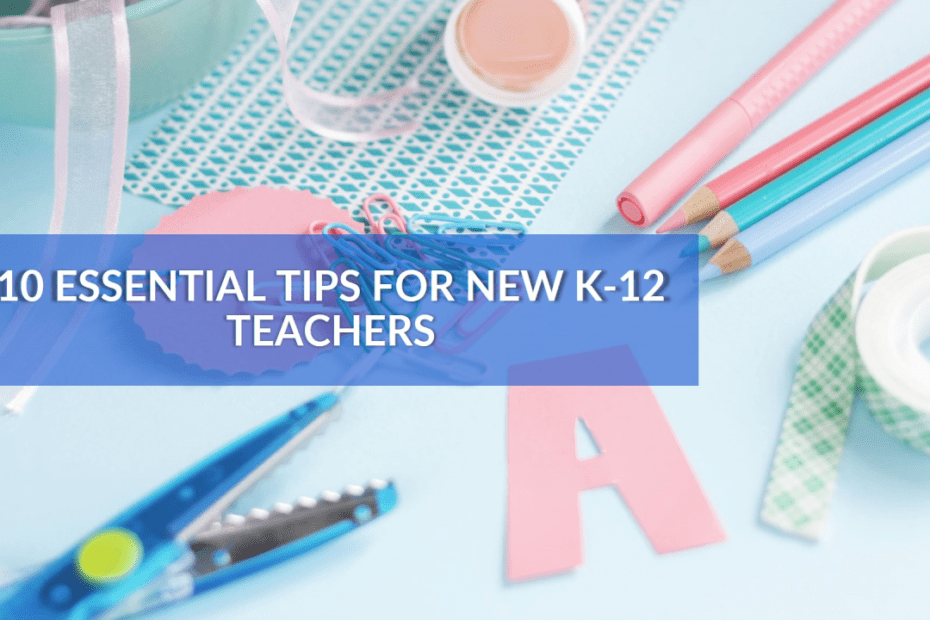Transitioning into the education field can be daunting, particularly for new teachers who are navigating the complexities of K-12 education. This listicle aims to provide indispensable advice catered to elementary school teachers who are starting their professional journeys. Whether you’re a fresh graduate or a career changer, these tips will arm you with a robust toolkit to guide you through the classroom dynamics, curriculum design, and student interaction. Here are 10 gold-standard tips that every aspiring K-12 teacher should know.
1. Foster a Culture of Respect and Classroom Community
One of your first tasks as a new teacher is to establish an inclusive and respectful classroom environment. Creating a culture of respect from day one sets the foundation for a positive and supportive learning atmosphere. This means showing respect to your students, their families, and fellow staff, and encouraging the same in return. Celebrate diversity within your classroom, and create opportunities for students to express their individual perspectives.
Strategies for Respectful Classrooms
- Begin each day with a greeting to acknowledge each student.
- Set clear behavioral expectations and consequences, but always emphasize positive reinforcement.
- Hold class meetings to discuss and resolve issues collectively, promoting a sense of community.
- Incorporate inclusive language and teaching materials that reflect the diversity of your student body.

2. Be Flexible and Adaptable
Flexibility is key in the dynamic world of K-12 education. From lesson plans to technological mishaps, unexpected challenges are par for the course. Therefore, as a new teacher, cultivating an open mindset and the ability to adapt on the fly will serve you well. Learn to pivot smoothly, adjust your strategies, and see changes as opportunities for growth rather than obstacles.
Flexibility in the Classroom
- Have a backup plan for every lesson.
- Be prepared to change course if a teaching method isn’t working for your students.
- Learn to manage your time efficiently, and be ready to prioritize tasks as needed.
- Accept and learn from constructive feedback from colleagues and students.
3. Utilize Resources and Professional Network
Rely on the wealth of resources available to you as a new teacher. This includes not only textbooks and online materials but also your colleagues, mentors, and professional networks. Fellow educators can provide invaluable support and share their knowledge and best practices. Joining and actively participating in professional organizations can offer ongoing education and a platform to connect with others in your field.
Souring Up Resources
- Regularly attend workshops, conferences, and webinars.
- Seek out a mentor or participate in a new teacher support program.
- Join online communities and social media groups for educators.
- Subscribe to academic journals and educational blogs to stay current with teaching trends and research.
4. Plan for Differentiated Instruction
Every student enters the classroom with a unique set of skills, learning styles, and backgrounds. Differentiated instruction is a teaching approach that acknowledges and addresses these differences, ensuring that all students are engaged and learning at their level. Knowing your students and understanding their needs will help you tailor instruction more effectively.
Strategies for Differentiated Instruction
- Use a mix of visual, auditory, and kinesthetic teaching methods.
- Incorporate various levels of content and scaffolding for different learners.
- Offer a range of assessments, such as projects, presentations, and written tests, to allow students to demonstrate their learning in different ways.
- Create flexible grouping strategies, such as homogenous groups for skill-specific tasks and heterogeneous groups for broader learning activities.

5. Manage Time and Classroom Activities Wisely
Effective time management is a skill that every K-12 teacher should master early on. Juggling multiple responsibilities, from planning and delivering lessons to grading and extracurricular activities, requires a strategic approach. Develop a routine that maximizes instructional time, minimizes disruptions, and offers structured transitions between different activities.
Efficient Classroom Time Management
- Use timers and visual schedules to communicate the day’s agenda to students.
- Batch similar tasks together, like grading during one period and lesson planning during another.
- Prioritize your to-dos daily, and be realistic about what you can accomplish in a given time frame.
- Involve students in the setup and breakdown of activities to save time and teach responsibility.
6. Build Relationships with Students and Their Families
Strong relationships with students and their families can significantly impact the success of your teaching. Take the time to get to know your students as individuals, show genuine interest in their lives, and be approachable. Involve parents and guardians in the educational process by maintaining open communication and providing regular updates on their child’s progress.
Establishing Rapport with Families
- Make home visits or phone calls before the year begins to introduce yourself.
- Keep a digital or physical portfolio for each student that showcases their work and progress throughout the year.
- Hold regular parent-teacher conferences to discuss academic and social-emotional development.
- Establish a user-friendly communication system, such as a class newsletter or an online platform, for consistent updates.
7. Prioritize Student-Driven and Inquiry-Based Learning
While it’s important to cover the required curriculum, allowing students to take ownership of their learning can be incredibly empowering. Student-driven and inquiry-based learning models promote critical thinking, problem-solving, and a deeper understanding of content. Encourage curiosity, and guide students in answering their own questions through research and exploration.
Encouraging Student-Centered Learning
- Incorporate project-based learning opportunities that tap into students’ interests and real-world applications.
- Integrate technology and other resources that allow students to seek out information independently.
- Provide time for reflection and self-assessment of learning outcomes.
- Foster a growth mindset, where mistakes are viewed as learning opportunities.
8. Implement Effective Classroom Management Techniques
A well-managed classroom is a prerequisite for effective teaching and learning. New teachers should have a repertoire of classroom management strategies to maintain order while fostering a positive learning environment. These techniques can include proximity control, positive reinforcement, non-verbal cues, and thoughtful lesson design to keep students engaged and on track.
Classroom Management Best Practices
- Establish a clear and consistent set of rules and expectations with student input.
- Use positive language and reinforcement to acknowledge good behavior.
- Develop a signal or phrase to get students’ attention without raising your voice.
- Consider the physical layout of your classroom to support your instructional goals and flow.
9. Invest in Professional Growth and Reflective Practice
The learning doesn’t stop once you have your teaching degree. Commit to ongoing professional development, and engage in reflective practice to improve your teaching continuously. Regularly reflect on your lessons, seek feedback from students and colleagues, and adapt your instructional approaches based on what you learn.
Cultivating a Reflective Mindset
- Keep a journal of teaching experiences, both successful and challenging.
- Participate in action research projects related to your classroom and curriculum.
- Attend professional development sessions that address your areas of growth.
- Join a professional learning community to engage in collaborative inquiry and problem-solving.
10. Take Care of Yourself and Cultivate Work-Life Balance
Finally, remember to prioritize self-care and foster a healthy work-life balance. Teaching is a demanding profession, and it’s important to take care of your well-being in order to be an effective teacher. Find ways to relax and de-stress outside of work, such as exercising, spending time with loved ones, or pursuing hobbies. Being well-rested and rejuvenated will not only benefit your personal life but also your teaching.
Self-Care Strategies for Teachers
- Develop a weekly schedule that includes time for self-care activities.
- Set boundaries for when you will and won’t work, and stick to them as much as possible.
- Connect with a supportive group of friends, family, or fellow teachers to share experiences and advice.
- Engage in mindfulness practices or activities that help you unwind and clear your mind of work-related stress.


